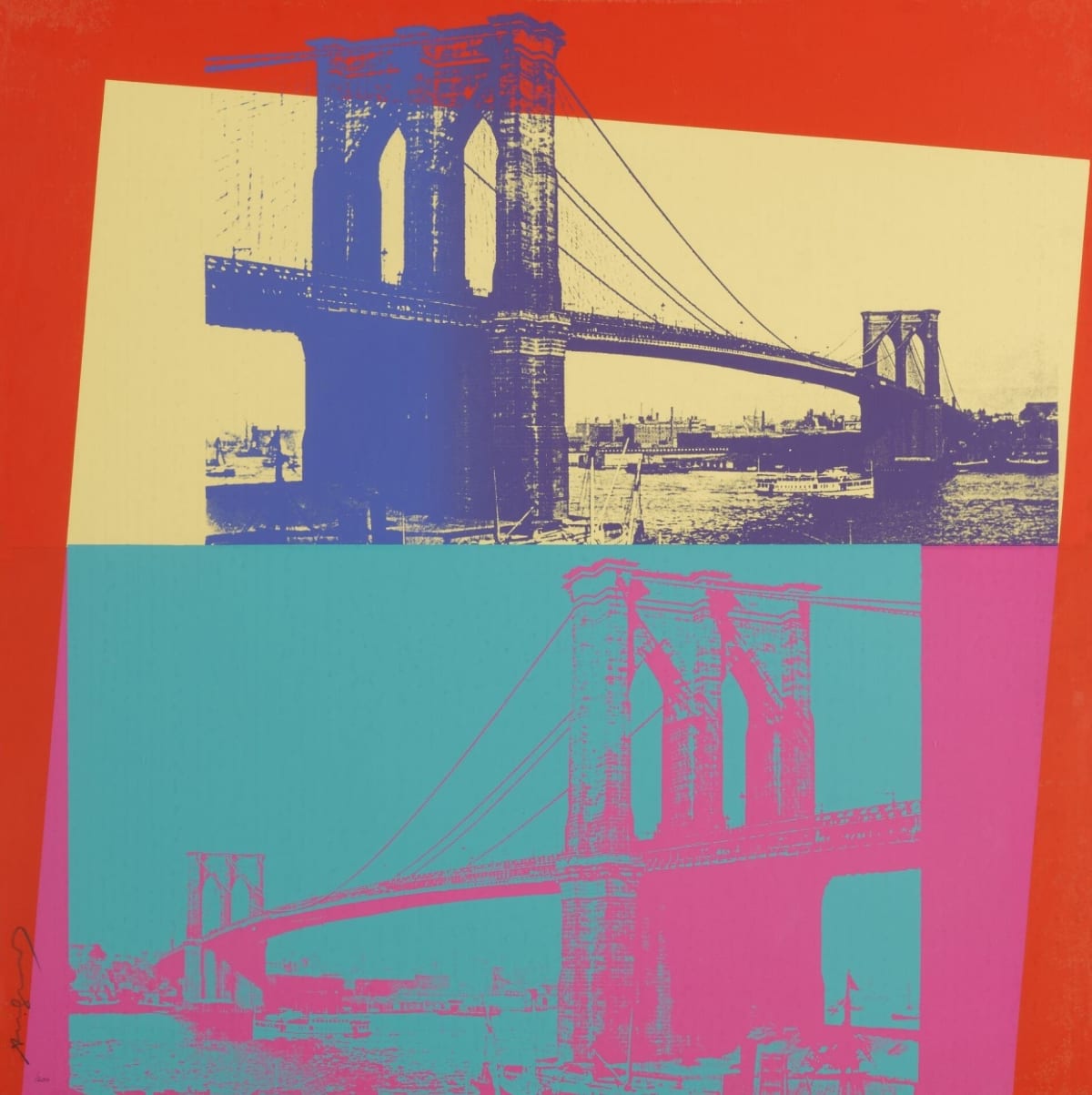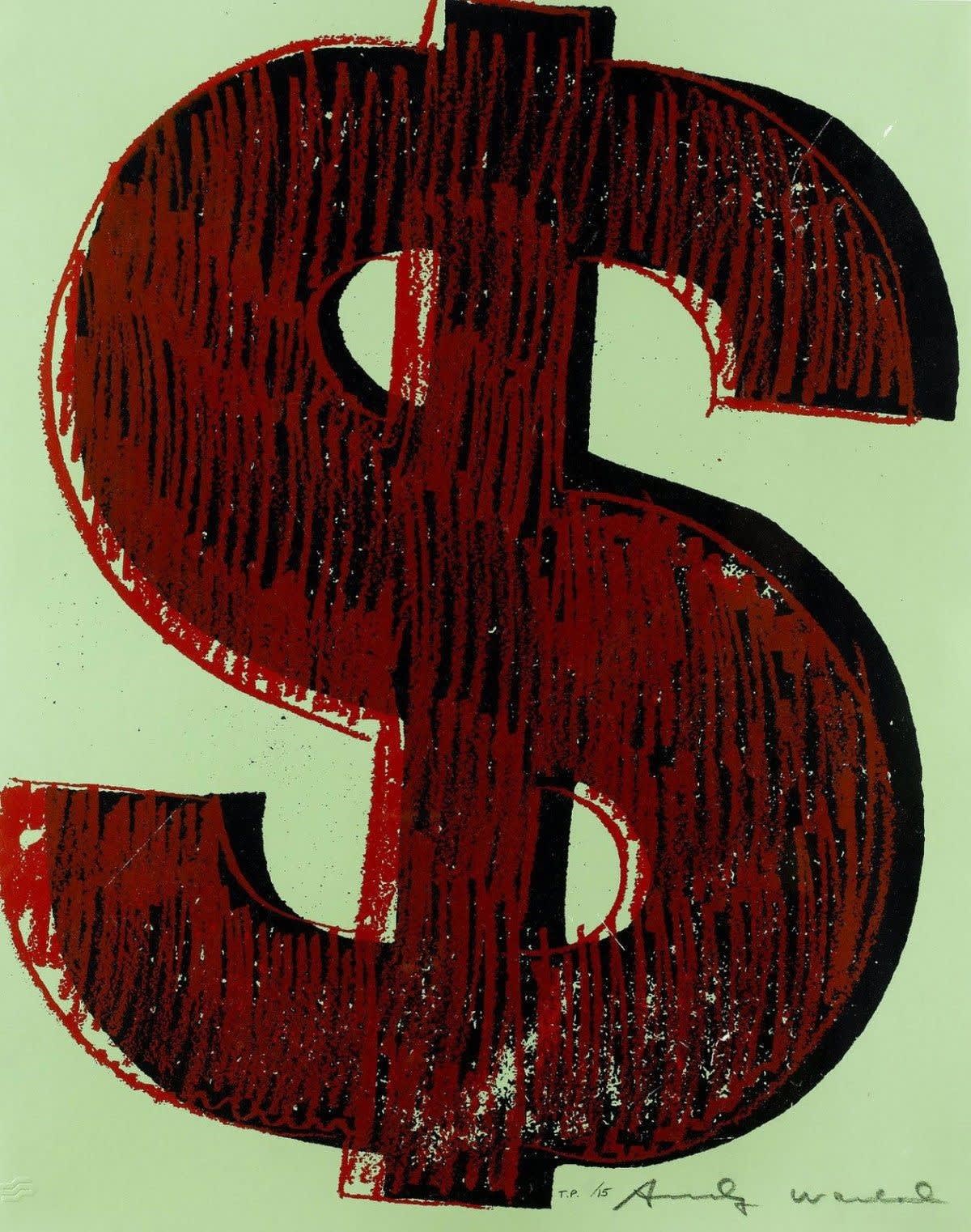
What are the five most famous Warhol artworks?
Warhol's early career was dedicated to commercial and advertising art, where his first commission had been to draw shoes for Glamour magazine in the late 1940s. In the 1950s, Warhol worked as a designer for shoe manufacturer Israel Miller. Arriving in New York City in the 1950s, Warhol immediately set about to make something of himself. Indeed, far from the worries his family had that he would fail to adapt to the busy city (very different from his suburban life in Pennsylvania) Warhol embraced his new life, like many artists of the time, Warhol began his career as a commercial illustrator working with esteemed magazines such as Harper's Bazaar. Gaining fame for his blotted line technique, Warhol rapidly rose to success and was highly in demand for his services. Warhol’s signature style, the blotted line technique, was first explored in his college years at Carnegie Institute of Technology.
In 1952, he had his first solo show at the Hugo Gallery, New York, and although that show was not well received, by 1956 Warhol was included in his first group exhibition at the Museum of Modern Art, New York. His most famous works would be created across his career, although Marilyn and his Soup Can series were some of the earliest works he produced within his pop-art career.
Marilyn Monroe - Various Works
Andy Warho’s most famous artwork is his series of paintings and prints of American actress Marilyn Monroe. Warhol’s source material for the Marilyn Monroe portfolio is a publicity still from Marilyn’s 1953 film, Niagara. At the time of the screenprint’s creation, Marilyn Monroe had been dead for five years: yet her image was still omnipresent, both in the media and in the American psyche. Warhol has cropped the original image, granting the viewer an intimate and close-up view of the starlet’s face. Repetition, a central tenant to the artist’s modus operandi, saw the image being reappropriated across a series of paintings including the most expensive Warhol painting “Blue Shot Sage Marilyn”, as well as various print series including Marilyn Monroe I Love your Kiss Forever Forever (F & S II.5), the Castelli Gallery invitation Andy Warhol Marilyn Monroe (Marilyn) (F & S II.21) and, of course, the iconic Marilyn Monroe portfolio.
The influence of Warhol’s Marilyn portraits on Modern and Contemporary art is inestimable: ranging from monochromatic to technicolour, his refashioning of one of the most famous faces in the world stands out as an autonomous symbol of the intertwining of art and celebrity.
Throughout Warhol’s use of Monroe, the artist highlights and magnifies the most unique features of the actress’s beauty: in every example of the suite, her eyes, trademark beauty spot and lips are emboldened by Warhol’s saturation of colour. Integral to the artist’s screenprinting process is the imperfection of ink, creating a lack of subtlety and fine line: Marilyn’s lips appear overdrawn, and her eyeshadow gaudy. This utterly striking, yet somewhat visually jarring effect evokes the obtrusive media circus surrounding the star, and her heavily constructed public image.
In repeating the identical publicity still of Monroe ten times, the seriality of Warhol’s portfolio speak to both the literal seriality of her image – reproduced thousands of times in publications and on television, as well as the metaphorical many ‘Marilyn’s: Norma Jean, the orphan before her Hollywood career, Warhol immortalised one of the most famous faces in modern history, infusing a ubiquitous image with a vivacious spirit. From this point onwards, the pop artist’s foremost reputation as a portrait artist was without doubt: according to Arthur C Danto, Warhol ‘did more than any other artist to revitalise the practice.’

Campbell’s Soup Cans - Various Works
Arguably the second most famous Andy Warhol artwork/motif is his mid 1960’s interpretation of the Campbell’s soup can logo. Originally released as a series of 32 paintings in 1962, Warhol, as with many other subjects, would go on to create two series of screenprints comprising of 10 different flavours in each: the Soup Can 1 portfolio and Soup Can 2 portfolio. Indeed, prior to the two portfolios, as with Marilyn, Warhol released a Campbell’s Soup Can (Tomato) (F & S II.4) print on a paper shopping bag.
Campbell’s Soup I, produced in 1968, is the first of Warhol’s Campbell’s Soup portfolios, produced in 1968, with a second volume released a year later in 1969. A now quintessential icon of Modern art, each portfolio comprises of ten screenprints, each of a different variety of Campbell’s soup.
A mass-produced product elevated to the status of art abruptly called into question the very nature of artistic representation. To cultural critic Jean Baudrillard, Warhol’s soup cans ‘releases us from the need to decide between beautiful and ugly, between real and unreal, between transcendence and immanence’.
The portfolios demonstrates the fluency of Warhol’s screenprinting process which he had learned from printer Floriano Vecchi in 1961. On paper, the seemingly banal object realised in Warhol’s planes of red and white colour are mesmerising. Though the works are characterised by visual directness, Warhol also carefully stylised each iteration of the can, giving individuation to his two portfolios.
So fruitful was the image of the soup can to the artist that he repeated it in every decade of his prolific career – it would reappear in the 1970s in Reversals and Retrospectives and in the 1980s in Campbell’s Soup Box 1985.
The story of Warhol’s decision to paint soup cans is rooted in his beginnings as a graphic artist. In the early 1950s, Warhol created artwork for advertisements, particularly shoes and clothing. The language of advertising and commerce was one that was familiar to him and would go on to leave an indelible mark on his artwork

Banana (F & S II.10)
Banana (F & S II.10) produced in 1966, is considered to be one of Warhol’s most famous images for its association not just with the artist, but for its use in The Velvet Underground & Nico’s eponymous album cover.
In the print Warhol’s screenprinting method is seen in full force: printing a yellow-and-black banana, the imperfection of ink distribution and its heavy, graphic nature are captivating. As he had done with the Campbell Soup can a few years earlier, Warhol elevated the everyday to the status of art. The banana itself is printed onto laminated plastic as well as styrene: a kind of sticker that can be placed and moved in different positions.
Banana’s association with perhaps the most pioneering rock band of the 60s, became one that was indeed so inseparable that a legal battle ensued regarding the ownership of the image. This points to the way in which Warhol’s images seemed to take on a life of their own.
Warhol would famously manage the band for a short time highlight his avant-garde inclinations and multidisciplinary approach to art in all its guises.

Brooklyn Bridge (F & S.II 290)
Despite being born in Pittsburgh, Pennsylvania, Warhol is commonly associated with New York. The famous Brooklyn Bridge was given the Warhol treatment in 1983 to commemorate the 100th anniversary of its opening.
In this striking work the monumental bridge appears twice against bright primary colours. The image of Brooklyn Bridge can be seen to be of vast importance as an iconic and historic landmark in the Pop Artist’s collection of recognisable images.
In Warhol's print, he imbues the depiction of the bridge with a playful humour, celebrating its structure in his unmistakable style. This artwork also encapsulates Warhol's enduring affection for New York City. With a personal and collage-like touch, Warhol flips the image of the bridge, layering mirror images atop one another. This unconventional printing technique, diverging from his usual aesthetics, reveals Warhol's surrealist inclinations and accentuates the bridge's offset perspective, giving the impression of endlessness. For aficionados of Andy Warhol, "Brooklyn Bridge 290" offers a glimpse of the city through the artist's eyes: bold, resilient, and exquisitely unique.

Dollar Sign - Various Works
Warhol famously quipped, “Being good in business is the most fascinating kind of art. Making money is art and working is art and good business is the best art.” and no work better represented this philosophy than his use of the dollar sign which appeared across paintings and print portfolios.
Gargantuan in scale and in subject, Warhol’s Dollar Sign is a symbol that is arguably the most bold assertion of Warhol’s most important themes of capitalism and consumerism. The artist had incorporated the currency symbol as early as 1964 with one dollar bills, however, his 1982 portfolio emboldens the dollar sign in a totally different way. Situated in its historical moment of the early 80s, a time of economic recession, the dollar sign manages to encompass an entire belief system, economy and society in a singular symbol. As Arthur Danto stated,‘Warhol’s dollar sign is as much an emblem of America as the flag’.
Warhol’s proclivity for repetition and seriality finds its ultimate effectiveness in his dollar sign: each dollar sign appears hypnotic in bright colours, electric backgrounds and three dimensional shading. Evoking the real allure and addictiveness of avarice, viewers are pulled in by the sign that is so ubiquitous yet seen differently in Warhol's pop palette.
As brash as it is bold, Warhol’s signifier can arguably be seen as the very culmination of his explorations in superficiality and commerce. Behind the artist’s ‘ready-made' images – the soup can and the brillo boxes - is the dollar: without the exchange of currency, there is no purchase of these objects of consumption and thus underpins all of his most-recognisable icons. Whilst the graffiti-like brandishing of the dollar sign might appear coarse for an artwork, it is a considerate coarseness that lays bare an inescapable fact – that the world of art also governed by the fundamental principles of wealth. With an astute awareness and humour, Warhol stated: ‘I like money on the wall. Say you were going to buy a painting. I think you should take that money, tie it up, and put it on the wall. Then when someone visited you the first thing they would see is money on the wall.’ The artist is also referencing the semiotic deconstruction of the dollar in an installation context. Warhol had produced 200 One Hundred Dollar Bills; here the sign is divorced from its background on the note with its value, emphasising its metaphorical rather than utilitarian purpose.
Today, Warhol’s Dollar Signs are as relevant as ever, and the iconography rivals that of Marilyn or Soup Cans in its universality. The dollar sign is at once distinctively American and global, with America being a powerhouse in terms of consumerism.

Discover original signed Andy Warhol prints for sale at Andipa Editions and contact sales@andipa.com or call +44 (0)20 7589 2371 for further information on any of the works featured.